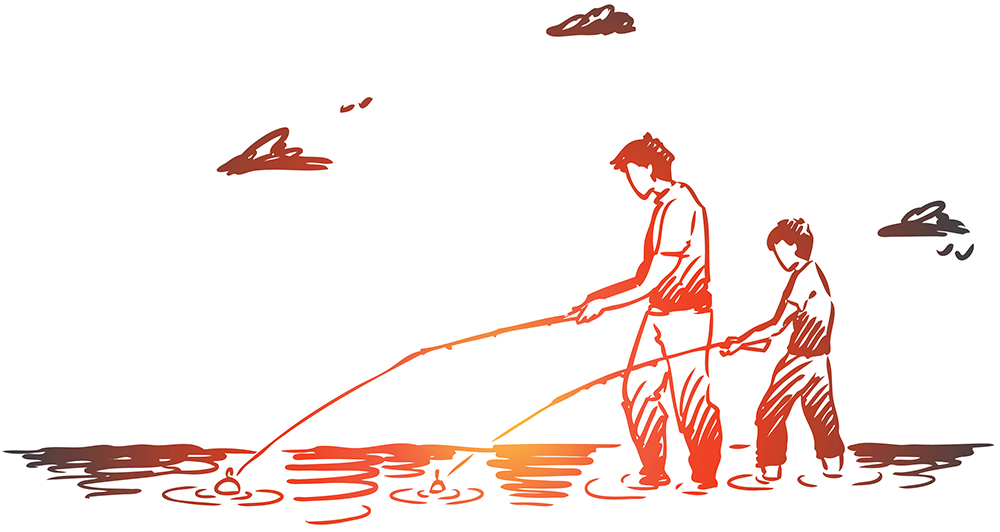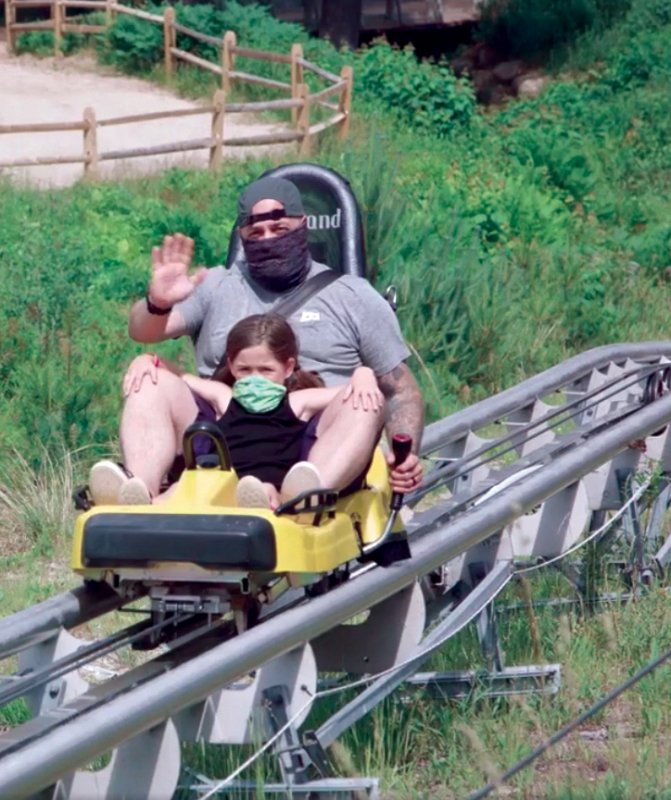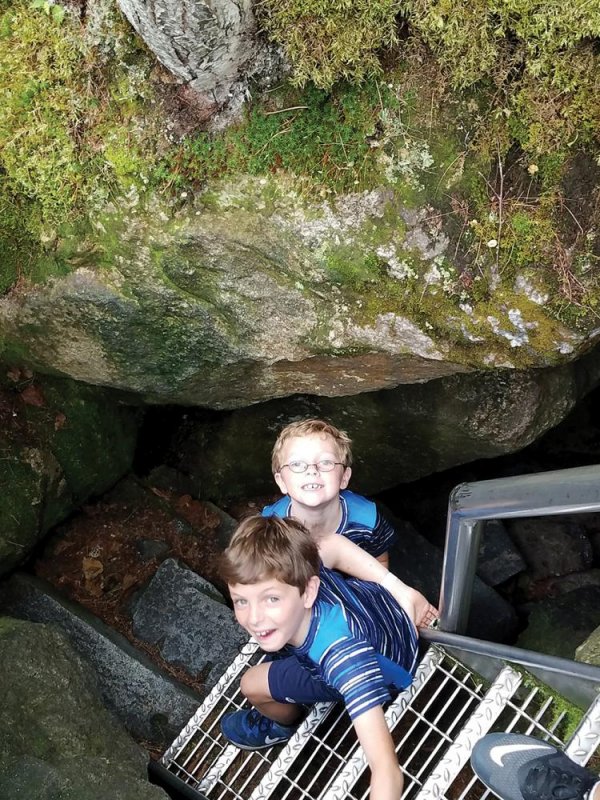
As most Americans are expected to have access to COVID-19 vaccines by May, and pandemic fatigue and cabin fever hit full force after a year of being cooped up at home, NH tourism officials anticipate a lively summer season.
While the NH Division of Travel and Tourism Development is not making any official visitor or spending forecasts due to the many unknown variables, regional tourism officials say advanced bookings for cottages, cabins, campgrounds and vacation home rentals are brisk, indicating people are eager to take advantage of NH’s outdoor recreation.
Amy Landers, executive director of the Lakes Region Tourism Association, says pre-bookings in March were already ahead of previous years. “A lot of boats have already sold, and rentals have been taken up. People are planning ahead this year.
People have to make reservations months in advance. You need to plan or you will be disappointed,” she says.
Charyl Reardon, president of the White Mountain Attractions Association, expects visitor levels in the White Mountains to return to pre-pandemic levels, adding the region typically hosts 6- to 8-million visitors between spring and fall. “The vaccine gives people comfort in traveling and eases concerns in the communities that there is that next layer of protection as visitors come into the mountains,” Reardon says, also noting advanced reservations are already ahead of 2020.
Lori Harnois, state tourism director at NH Department of Business and Economic Affairs, credits the vaccine rollout with increased visitor interest and for attracting visitors further afield who will stay longer, and spend more, than the mostly day-trippers and weekenders that drove last summer’s tourism season.
While NH’s core markets for visitors are New England and New York, Harnois says with visitors planning longer road trips this summer, “We will expand our reach beyond those typical core markets to markets within a 600-mile radius.”
She is also hopeful the Canadian travel restrictions will be lifted and the state will promote itself to that critical market.
Harnois says the Canadian and overseas tourists usually account for 20% of summer visitors to NH, with most of those coming from NH’s neighbor to the North. The Canadian travel restrictions suppressed visitor numbers last summer, she says.
“A lot of tourism businesses had to pivot last summer. They knew they didn’t have those travelers coming and looked at closer markets,” Harnois say. “Last year we had a campaign to encourage residents to vacation in their own state.”
Summer Marketing
The state typically starts marketing summer tourism in May, but this year began in March. “We really feel people have pent up demand to travel,” she says. The state focused on social media and search engine marketing in March and April and will add television, display ads and email campaigns in May.
Harnois says this year’s publicity urges visitors to seek out new adventures in NH. In 2020, White Mountain Attractions focused its message on “Visit Again Safely” and is evolving that in 2021 to “Know Before You Go,” highlighting masking, social distancing and making advanced reservations part of the experience.

The mountain coaster at Cranmore Mountain Resort in North Conway. Courtesy of White Mountains Attractions.
Summer attracts the highest number of visitors, Harnois say, and the state spends upwards of $2 million on promoting the season. In Gov. Sununu’s biennium budget proposal this year, he cut the tourism budget by $1.4 million.
Harnois says tourism is the second most important industry for the state. “It is critical to our economy,” she says of the devastating effect the pandemic had on the hospitality and tourism businesses. “This is the time for us to help the industry recover and marketing is a crucial component.”
Budget cuts also mean cuts to a critical marketing program administered by the state—the Joint Promotional Program (JPP), a 50/50 matching grant program designed to support promotional initiatives developed by tourism groups.
Normally, the Lakes Region Tourism Association would apply for $125,000 in JPP funds and White Mountains Attractions would apply for $200,000, but the cutbacks mean those amounts will be scaled back. “It is the only matching grant in the state. It doubles what gets spent. It results in more marketing being done,” Landers says.
 Children exploring at Polar Caves Park in Rumney. Courtesy of Lakes Region Tourism Association.
Children exploring at Polar Caves Park in Rumney. Courtesy of Lakes Region Tourism Association.
Reardon says White Mountain Attractions is trying to secure $125,000 in JPP funding this year. “We rely heavily on those funds,” she says. “We’ve certainly reduced our marketing budget. In the past it had been close to $1 million in marketing.
This coming year we will see about half of that.” She notes a coalition between chambers and travel associations is lobbying legislators to increase the state’s investment in tourism to accelerate the recovery of rooms and meals taxes and bring back hospitality industry jobs.
Push to Loosen Guidelines
Industry leaders are also working with the state to urge less restrictive COVID guidelines for the summer. “They are working with the governor’s task force to reopen the economy to ease some of the guidelines in place so they can have a stronger season by being able to welcome more guests,” Harnois says.
However, she adds that abiding by the safety guidelines is essential to making visitors and staff feel safe. “I think patience is important for us to understand when traveling now. We have to be understanding that things aren’t the way we once knew,” she says.
Reardon says capacity limits set last summer made it a challenging season. And Landers says while there are many protocols that remain in place, such as wearing masks and providing sanitation stations, she is hopeful state guidelines will increase capacity figures allowed at attractions.
Lessons From 2020
While 2020 was hard for tourism, it was not all bad news. Tourism fared better than expected last summer, Harnois says, as residents explored the state.
Landers says when the pandemic hit, many in hospitality and tourism received a flurry of cancellations. Then, as summer drew closer, new visitors began making reservations. “Once we get them, they become repeat visitors,” she says. “For many businesses, July, August and September were very strong.”
And visitors continued to flock to the Lakes Region in October and November, Landers says, which ended up being stronger than pre-pandemic years. “People were coming mid-week instead of waiting for weekends because they could work from anywhere,” she says.
Despite that influx, some businesses still struggled, says Landers, pointing out stores and attractions had to limit visitors to meet NH guidelines. However, outdoor adventures sold out or rented their entire stock. “Many visitors last summer found out that if they didn’t book canoes and kayaks in advance, they were unavailable,” Landers says.
Landers says the bigger challenge facing the industry is finding employees. While finding a seasonal workforce is always a problem, Landers says it is 10 times harder in 2021, without the usual overseas employees to draw from due to travel restrictions and limited visas. As such, some of the protocols instituted for safety reasons last year will remain due to low staffing, such as cleaning rooms when visitors request the service, requiring advanced ticketing at attractions and forgoing in-person check-ins at hotels, Landers says.
Restaurants will likely keep their expanded outdoor dining areas even if indoor capacity limits are relaxed this year, Reardon says, as they already made the investment. “Businesses across the state have been innovative in how they have changed their business models to address not only the pandemic, but to make that experience that much better for visitors,” she says.

 Current Issue - May 2024
Current Issue - May 2024